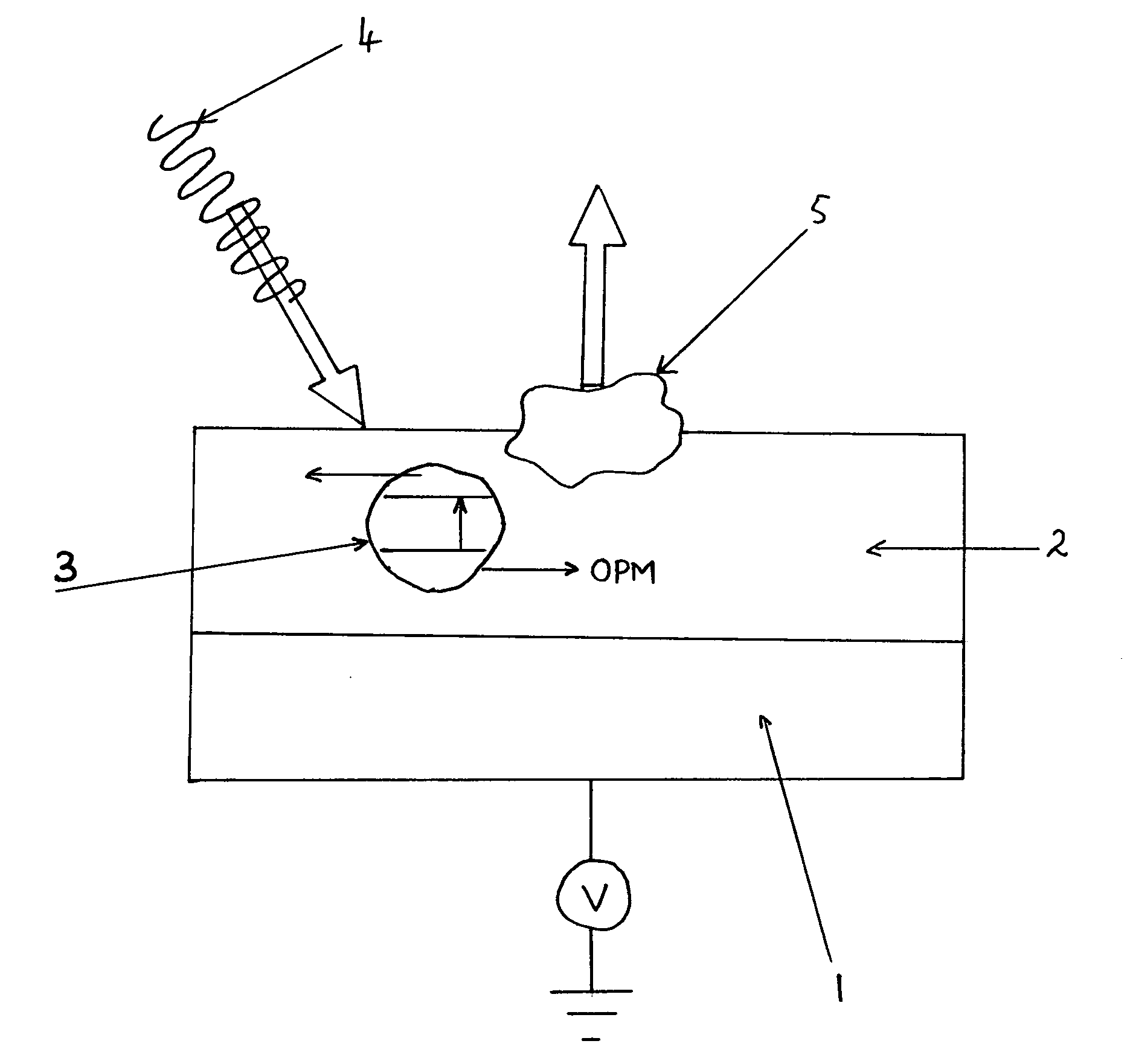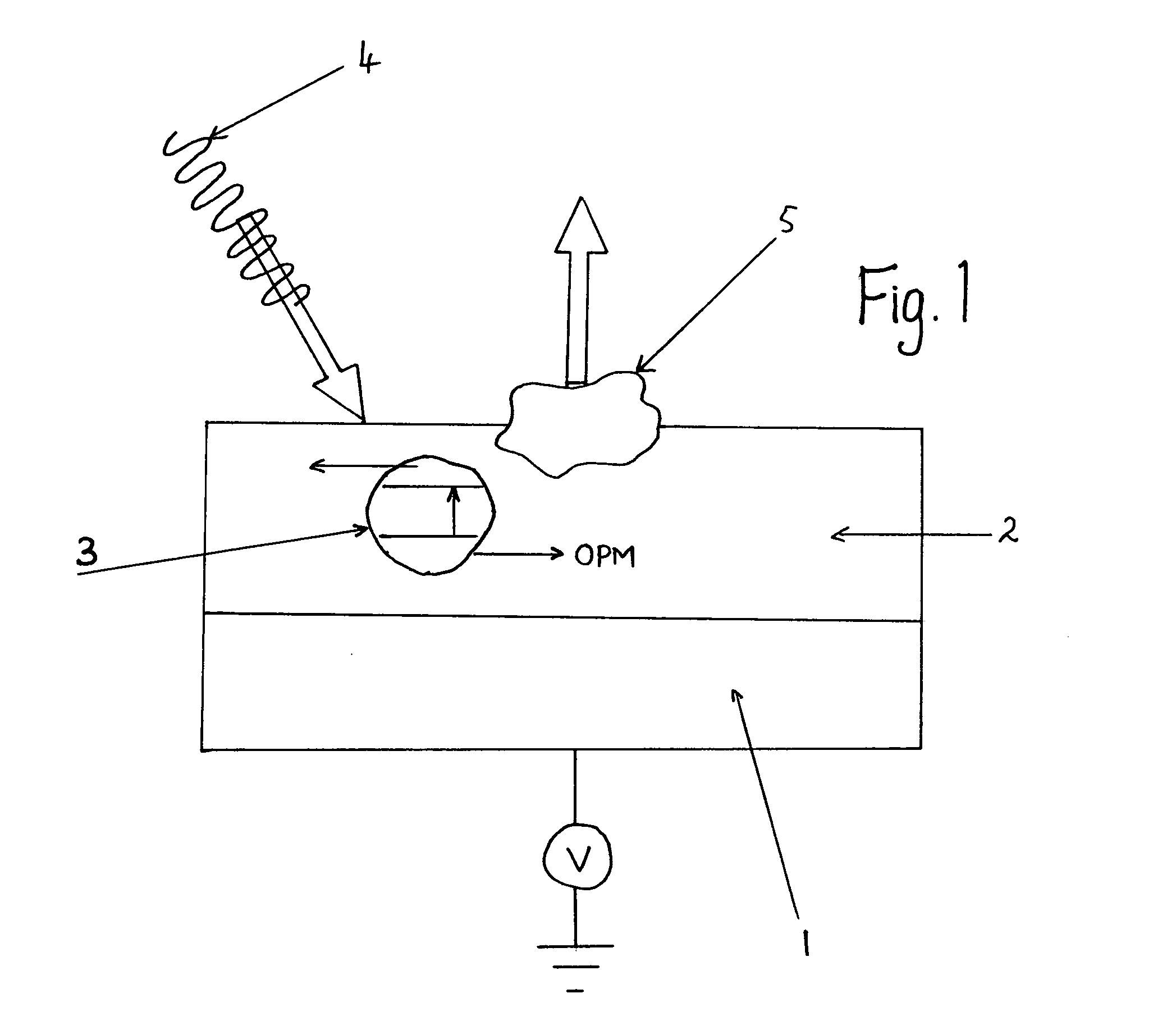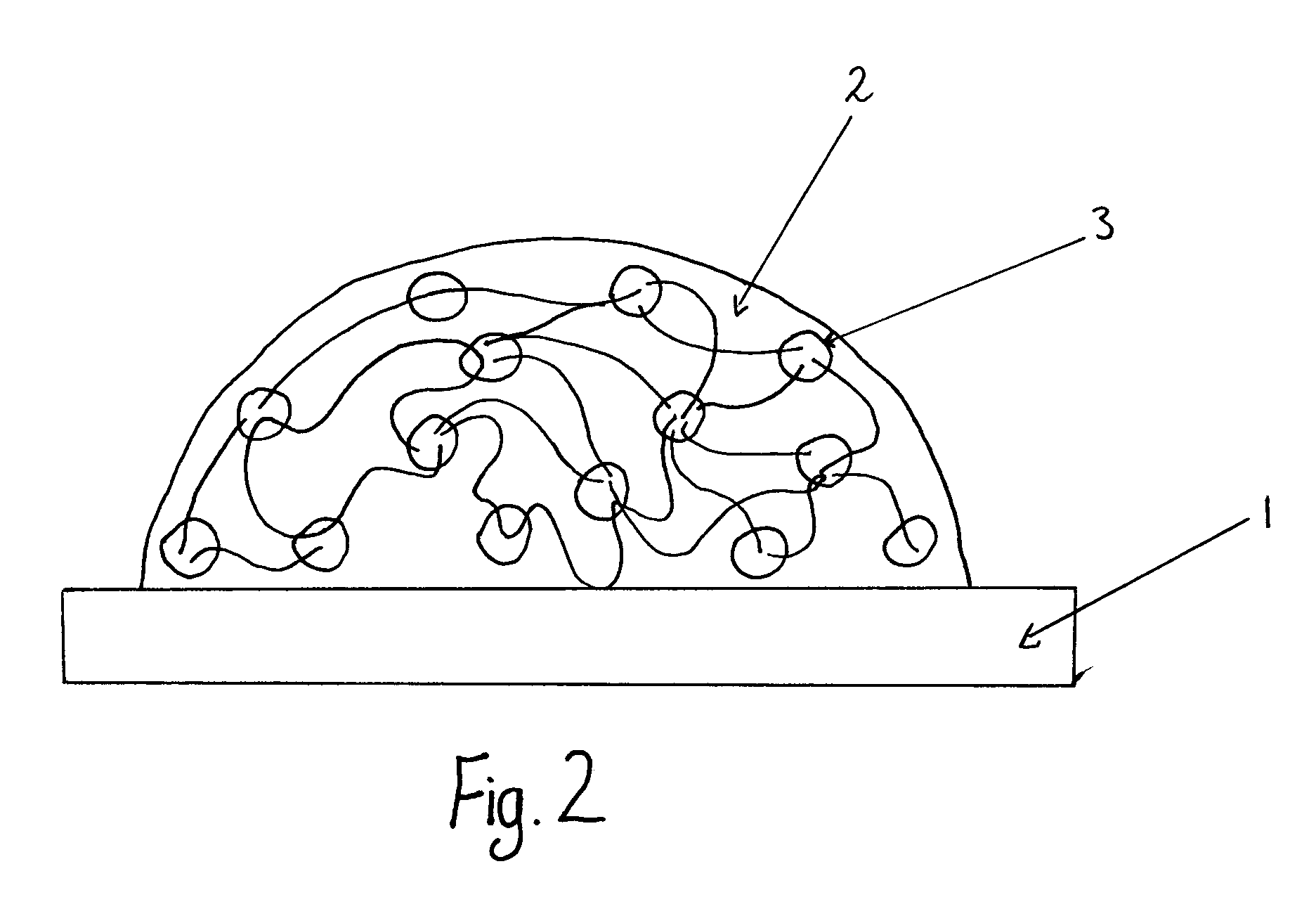Ionization Device
a technology of ionization device and photoreactive matrix, which is applied in the direction of plasma technique, particle separator tube details, separation process, etc., can solve the problems of high inhomogeneous spots and diminish the final surface concentration of matrix/analyte mixtur
- Summary
- Abstract
- Description
- Claims
- Application Information
AI Technical Summary
Problems solved by technology
Method used
Image
Examples
example 1
MALDI Matrix Containing TiO2 Nanoparticles
[0041]A classical MALDI matrix is prepared by adding commercially available titanium oxide nanoparticles (Degussa P25, 21 nm in diameter, 50 m2 / g). To break the aggregates into separate particles, the powder was ground in a porcelain mortar with a small amount of water and finally suspended in water and ethanol mixture (10 mg per 100 mL), and then deposited as a thin layer or an array of spots on a stainless steel plate and dried at room atmosphere. TiO2 nanoparticles are efficient catalyst for the photo-oxidation of organic molecules in aqueous solutions and are used here to oxidize the probe molecule PM to generate directly OPM that can further react with other sample molecules SM. The results obtained by this approach using the reaction scheme described in FIG. 4 are shown in FIG. 5.
example 2
MALDI Matrix Prepared by a Sol-Gel Process
[0042]A TiO2 matrix has been obtained from the hydrolysis-condensation of Ti(OBu)4 [J. Blanchard, S. Barbouxdoeuff, J. Maquet and C. Sanchez, New J. Chem., 19 (1995) 929]. In contrast with classical methods [J. Blanchard, S. Barbouxdoeuff, J. Maquet and C. Sanchez, New J. Chem., 19 (1995) 929; C. T. Chen and Y. C. Chen, Rapid Commun. Mass Spectrom., 18 (2004) 1956] (i.e. hydrolysis-condensation performed in alcohol), the Sol-Gel process is carried out in aqueous medium [H. Wu, Y. Tian, B. Liu, H. Lu, X. Wang, J. Zhai, H. Jin, P. Yang, Y. Xu and H. Wang, J. Proteome Res., 3 (2004) 1201; T. Zhang, B. Tian, J. Kong, P. Yang and B. Liu, Anal. Chim. Acta, 489 (2003) 199] using polyethyleneglycol (PEG) as stabilizing and porogenic agent [C. T. Chen and Y. C. Chen, Rapid Commun. Mass Spectrom., 18 (2004) 1956]. The resulting TiO2 Sol is then deposited (˜2 μL) as a thin layer or an array of spots on a flat stainless steel plate and dried at room atm...
PUM
 Login to View More
Login to View More Abstract
Description
Claims
Application Information
 Login to View More
Login to View More - R&D
- Intellectual Property
- Life Sciences
- Materials
- Tech Scout
- Unparalleled Data Quality
- Higher Quality Content
- 60% Fewer Hallucinations
Browse by: Latest US Patents, China's latest patents, Technical Efficacy Thesaurus, Application Domain, Technology Topic, Popular Technical Reports.
© 2025 PatSnap. All rights reserved.Legal|Privacy policy|Modern Slavery Act Transparency Statement|Sitemap|About US| Contact US: help@patsnap.com



